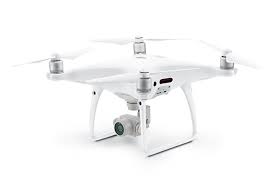Drones at NBR: hardware

Here is some info on the hardware we’re employing at NBR and some thoughts from a season and a bit of use.
Drones:
- 2 x DJI Phantom 4 Pro (purchased March 2018). Light, responsive, user friendly. Very glad we didn’t get the Pro+, as it appears to be hard to use different/ third-party apps with it. I’ve previously used 3DR Solos, and I think this is just a little bit better. It’s a fair bit more expensive though, and I’m pretty confident that when we start with multispec, I’ll be wishing the DJI was a easy to modify as the Solo (which was really easy).
- Extra batteries of max size available (costs ca. 2000SEK) and a car 12V power inverter (ca. 500SEK). To get through a full day of flying missions, it is necessary to either have 8 extra batteries (way too expensive), or two batteries and a way of charging them in the car. With the distances we have between trial sites and thus missions, this system works well. I’ve only once forgotten to plug in the charger, which did lose me 30 minutes while I waited for a battery to charge.
- Extra memory card. The 64GB card we purchased actually made the whole season. It wasn’t a super high speed/ expensive card either, but it worked fine (300SEK).
- Carry case: nope. The case the drone came in is tough enough and gives good protection.
- 1 x DJI Mavic 2 Enterprise Dual (purchased May 2019). This technically belongs to SLU, but to my projects. Mavics are pretty slick drones already, but add a thermal camera and you start to see some very interesting things. The ‘Fly-more’ pack includes 2 extra batteries, but we’re not using this drone as extensively, so don’t have capacity issues.
- 5 x DJI Mavic 2 Minis (MAYBE…). We’re currently exploring the next generation of drones that fit our needs. The mini is about 1/3 the cost of what we’re running now. It doesn’t have the same safety sensors on it at Phantoms and Mavic-the-full-version, but we don’t really need them. It’s a 12MP camera, which in comparison to the 20MP camera we’re used to means about 25% longer flight times and number of images (for the same spatial resolution). With an average flight time of 6 minutes, the value of having 3 drones in the field (verse 1) in each country seems to outweigh the cost of the extra time per mission. BUT there is currently the problem that Minis aren’t supported by Pix4D Capture.
- Android mobiles for controller screen. Once upon a time I was using an iPhone 5 and it was fine, but small. Now I’m using a Samsung S8+. It’s a 6 inch screen, which I really appreciate. If having a device just for the drone is an option for you, the iPad mini is apparently the best option, but it seems like a waste of money to me. DJI work closely with Apple, and some of their own apps are only available on iOS, but I’m guess that working in Android is better with third-party apps and with file sharing and working in a team. But it’s just a guess.
Field equipment:
- A heavy tarp (e.g. 650g/m2 – the smallest 1.6 x 1.85m one of this weight at Biltema will do and only costs 149SEK). A clean camera lens is important, so the tarp protects that from all the soil and plant material that would otherwise be kicked up at take-off and landing. It also usually makes for a useful place to set up, and for a flatter landing site. Don’t get a light tarp as it’ll probably flap around in the down draft from the drone, possibly even getting caught in the rotors.
- Ground Control Points (GCPs): or at least clearly identifiable markers to put next to corner flags. It can be really hard to identify the corner flags early in the season, so you need something to put next to them that can be seen. I highly recommend the purchase of a meter or so of chequered lino (rutiga vinylgolv). It’s light, durable, you can cut it with scissors, and it’s cheap: we got 10 GCPs for around 250:-. It was 1 meter of 4 meter wide chequered lino from Bauhaus.
- Log book. It was the law that a log had to be kept. I’m not sure it if still is, but I keep a log of flight times, battery percentages, and weather conditions anyway. The batteries apparently have a pretty limited life of around 200 charges, so it’ll be good to know when they’re approaching end-of-life. Knowing the weather helps with understanding light and shade on images, and helps identify what image is what. Law or not, it’s just good practice.
- Signage. It’s amazing how often people will come and ask you what you’re doing and tell you that they don’t want you taking photos of their houses. I can’t remember the legal issues of needing signage, or taking photos of people houses without their permission, but that’s not what we do. And having a sign up will hopefully mean that you’ll not have to land the drone to have that conversation. Law or not, it’s also just good practice.
(See post ‘Drones at NBR: software‘ for a lot more info on our set up)